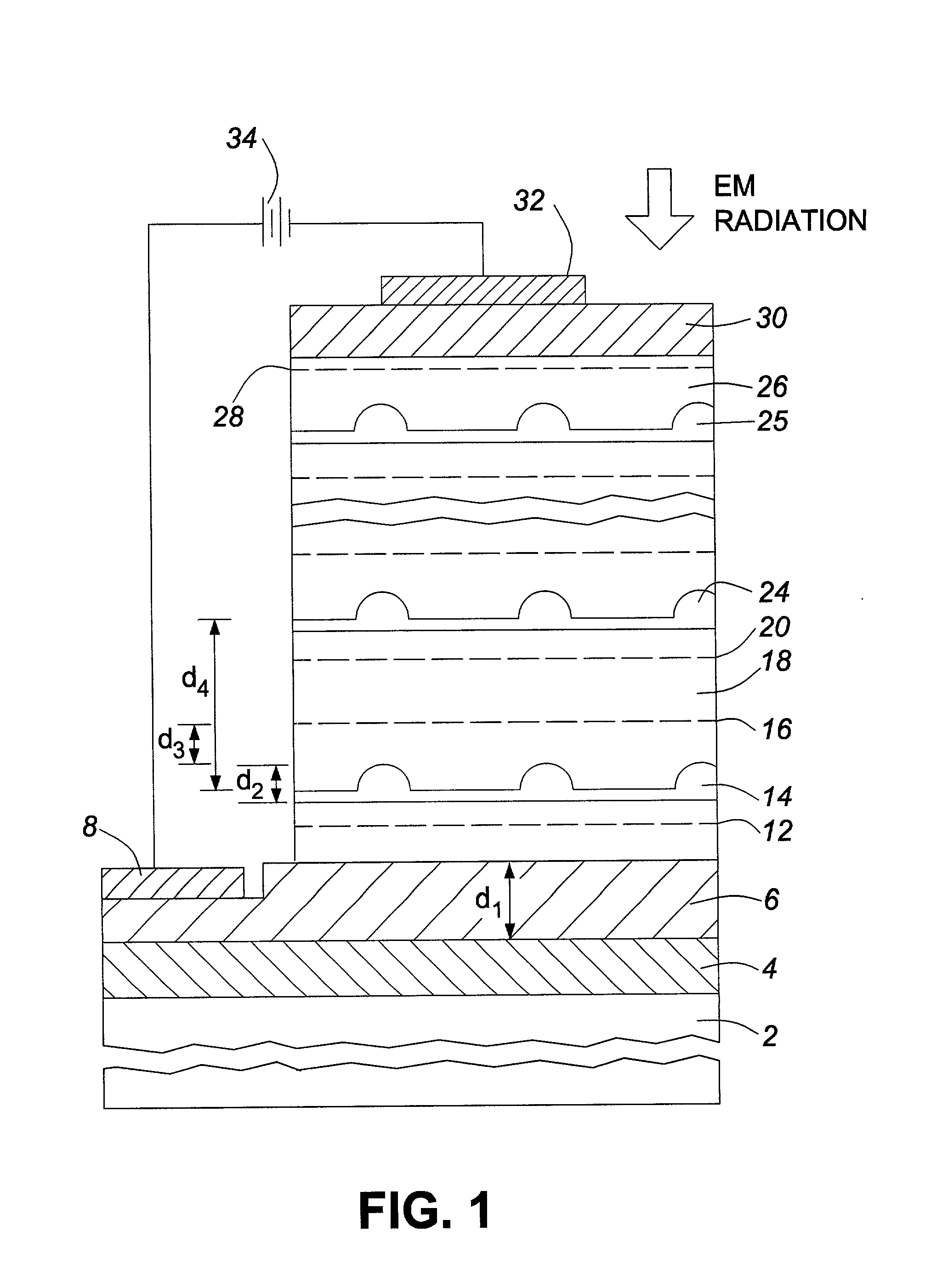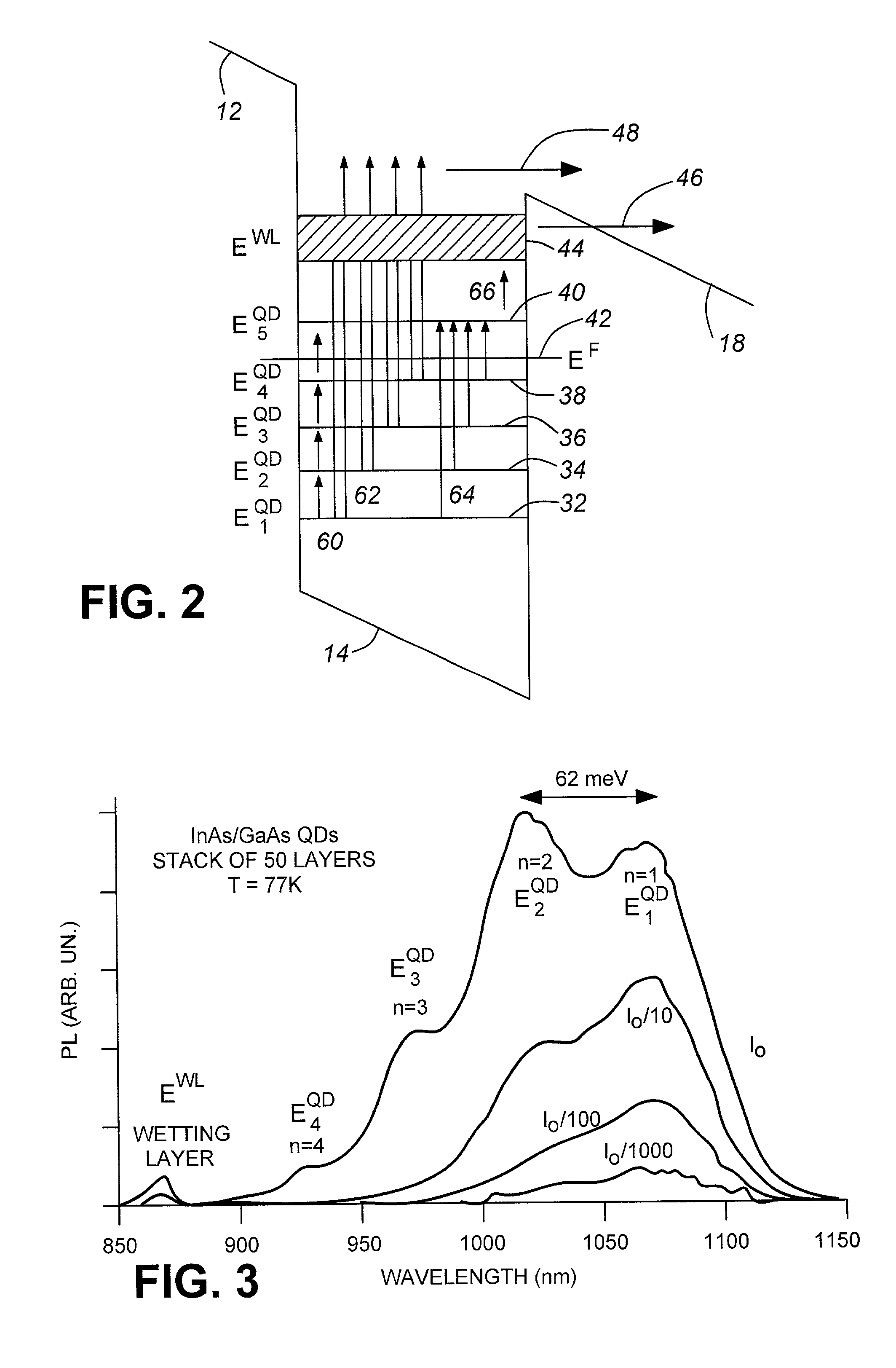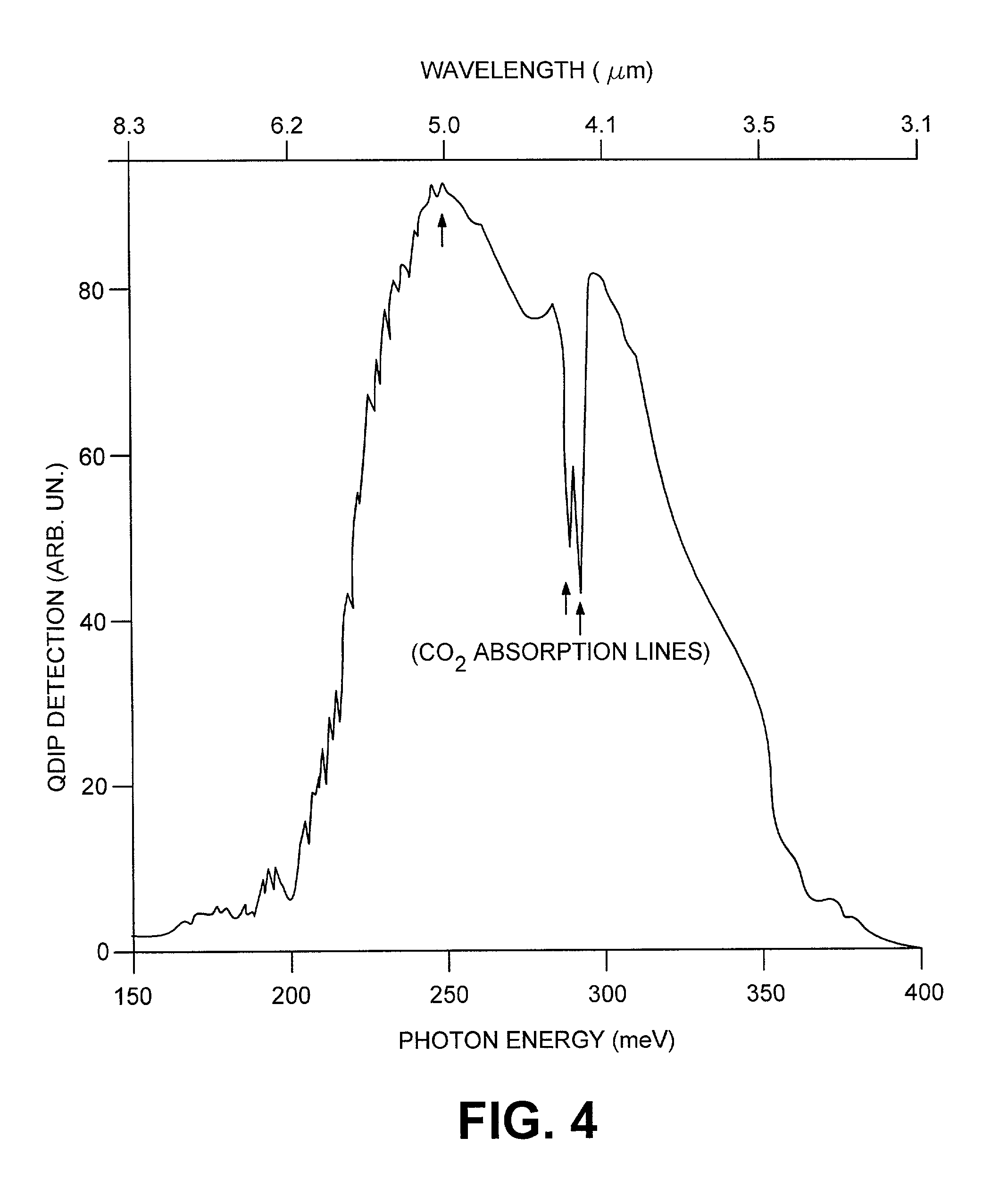Quantum dot infrared photodetector (QDIP) and methods of making the same
a technology of infrared photodetectors and quantum dots, which is applied in the field of quantum dots infrared photodetectors (qdip) and methods of making the same, can solve the problem that normal incidence detection over a broad range in the ir can only be achieved with complicated light coupling devices and/or schemes
- Summary
- Abstract
- Description
- Claims
- Application Information
AI Technical Summary
Benefits of technology
Problems solved by technology
Method used
Image
Examples
Embodiment Construction
[0024] FIG. 1 illustrate a portion of the photodetector in accordance with an embodiment of the invention. The photodetector comprises multiple layers of semiconductor materials. These layers include, from bottom to top, a bottom contact layer 6 which serves as a collector or an emitter which will preferably be doped to provide carriers and for conductivity, a first barrier layer 12 which can be doped continuously or modulation doped as shown to provide carriers and for conductivity, and at least a first quantum dot layer 14.
[0025] For enhanced performance, the photodetector will preferably have multiple layers of quantum dots, in which case a barrier 18 will separate the first quantum dot layer 14 from a second quantum dot layer 24. The barrier 18 can be doped continuously or modulation doped (16 and 20) to provide carriers and for conductivity. In the case of modulation doping, multiple layers of doping can be used in the barrier 18. For example FIG. 1 illustrates the case where t...
PUM
 Login to View More
Login to View More Abstract
Description
Claims
Application Information
 Login to View More
Login to View More - R&D
- Intellectual Property
- Life Sciences
- Materials
- Tech Scout
- Unparalleled Data Quality
- Higher Quality Content
- 60% Fewer Hallucinations
Browse by: Latest US Patents, China's latest patents, Technical Efficacy Thesaurus, Application Domain, Technology Topic, Popular Technical Reports.
© 2025 PatSnap. All rights reserved.Legal|Privacy policy|Modern Slavery Act Transparency Statement|Sitemap|About US| Contact US: help@patsnap.com



